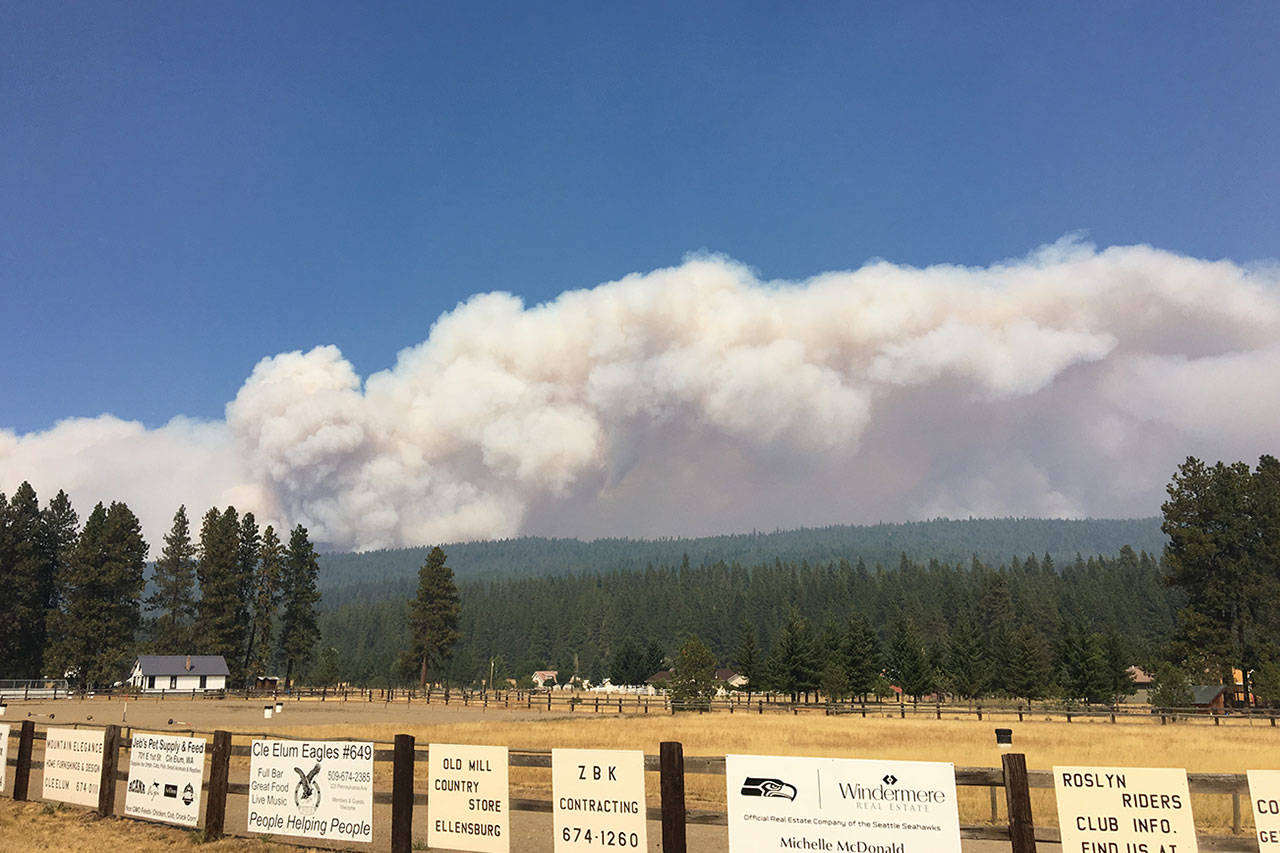On Thursday, July 11, Vashon Island residents learned what being truly ready for wildfires would look like.
At a presentation at the Land Trust Building, wildfire experts from local agencies warned of the current high risk of wildfires and described how property owners can get ready.
Ashley Blazina, of the state’s Department of Natural Resources, said the Pacific Northwest was seen by the National Weather Service as having “much higher fire potential than normal” in May and June 2019.
Recent bouts of unseasonal July rain did little to change that outlook, she said.
“It’s really important not to be fooled by that. … All our vegetation is still susceptible to burns,” Blazina said.
Along with three other specialists in wildfires, Blazina described the steps that Vashon residents could take as individuals, in neighborhood groups and as a community to minimize their risk should wildfires break out on Vashon.
Wendy Sammarco, a forester with King County, said homeowners should begin with two questions.
“Can fire trucks get to your home? And do you have defensible space?” Sammarco asked.
The former question means adding signage, widening driveways or removing overhanging limbs so fire trucks can enter freely. The “defensible space” may require more long-term effort.
This means working first on the zone within 5 feet of buildings, replacing or removing anything combustible with non-combustible materials such as gravel.
The area from 5 to 30 feet away from the house should be kept sparse, with any vegetation kept low and widely spaced. The frequent habit of storing firewood near the home is a problem, presenters agreed.
From 30 to 100 feet away from buildings, owners should remove dense fuel from forest floors and limb trees near the ground. The group warned of “fire ladders,” or sets of trees that form a bridge for flames to grow higher from tree to tree.
Blazina explained that most houses that burn down do so because of flying embers, which can travel up to a mile away. For this reason, removing the tinder from the space directly around the home can be a more realistic step than slowing the progress of fires through open forest.
The problem of decks concerned a few attendees, since wooden decks count as combustible material and are usually directly against the house.
Blazina urged, at a minimum, to keep debris from sifting through the space under decks, where it dries out and forms kindling. Mesh screens or better deck spacing, along with cleaning under decks, might be easier steps for some than removing a deck entirely.
Sammarco said she shared the concerns of some attendees with removing too much of the natural structure of local forests.
“I do want to put a plug in for wildlife,” she said. In some cases, limbing a snag or downed tree may be a better option than removing it entirely, she said.
The presenters described the help Vashon residents can request in preparing for wildfires.
Matt Axe, working through the King Conservation District’s (KCD) Wildfire and Forest Resiliency department, conducts free assessments of individual properties. He described his focus as consulting with individuals in “creating that lean green space around your home.”
The KCD also encourages neighborhoods to work together. Axe and his colleagues will lead group presentations and use a combination of satellite images and on-site visits to create a Firewise Community Action Plan.
Axe said the program could also facilitate “chipper days,” with residents removing excess brush from their properties for chipping by a professional crew.
So far, Axe reported, the neighborhoods of Vashon Cohousing and Burton Hill have joined up for Community Action Plans. He also estimated about 100 individuals have had wildfire risk assessments through KCD.
Fire Chief Charlie Krimmert told attendees that the larger community of Vashon still has work to do in preparing for wildfires.
“We have very active NERO groups. They’re emergency response organizations that are very community-based,” Krimmert said.
“But it’s come to our attention … there is no serious evacuation plan for any large conflagration on the island.”
Like many small communities, Vashon can call on mutual aid from neighboring fire districts. But the unique constraint of the ferries can put that aid an hour or more away.
“We have to figure out very quickly what our plan of action is, and those are plans that are being developed as we speak,” Krimmert said.
The presenters touted a group called Washington Fire Adapted Communities Learning Network, which helps communities build detailed plans for wildfire resilience. So far, a Vashon chapter has not formed.
Blazina noted that while there have been record-breaking wildfire seasons, this region is experiencing less fire than it has historically. She also pointed out that fire is a fact of life in our region.
“In the Pacific Northwest, fire has been part of our fabric forever.”
Even so, one change in the character of Northwest fires is their origin: 94% of current-day wildfires are human-caused, Blazina said.
—Andy James is a freelance writer.
The National Fire Protection Association has a storehouse of guides for property owners.
To arrange for a free wildfire risk assessment for your home or neighborhood, contact Matt Axe at matthew.axe@kingcd.org.
As a community, Vashon has not yet joined the Washington Fire Adapted Communities Learning Network. The group’s site has a form for those who want to start the process.
National wildfire forecasts can be found at the National Interagency Fire Center site. Vashon’s current burn status can be found at vifr.org/content/firesafety.


